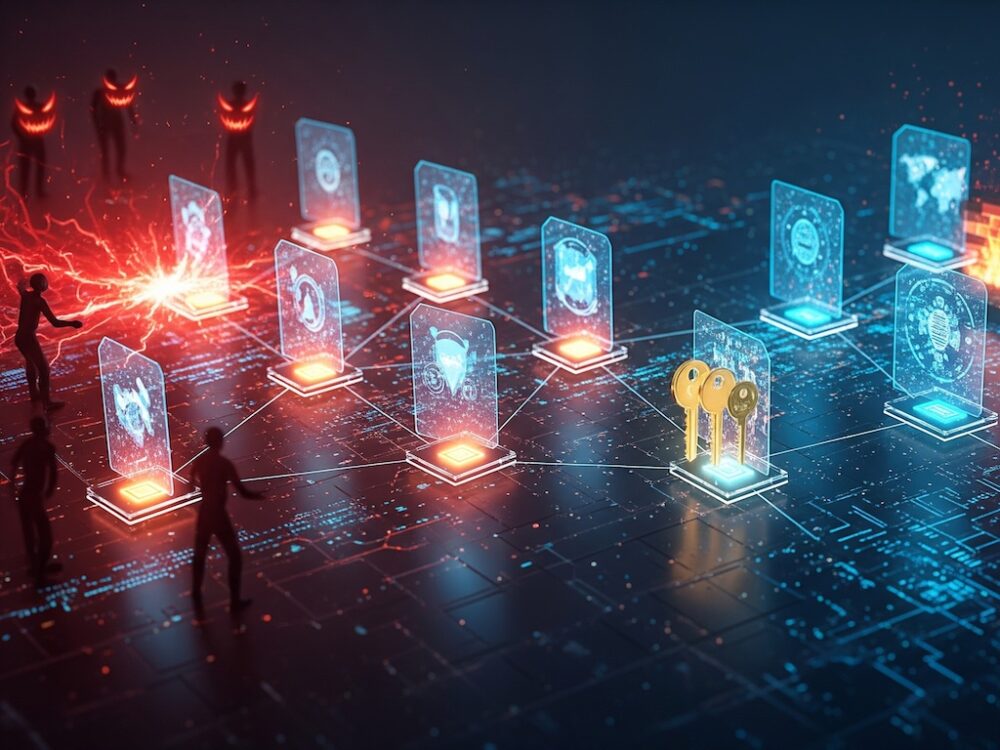In the intricate global economy, supply chains are the lifeblood of industries, connecting everything from raw material extraction to final product delivery. However, this complex web of interconnected entities has become a prime target for sophisticated cyberattacks, particularly from nation-state actors and organized hacking groups operating from various global hideouts. Reports consistently highlight persistent threats emanating from countries like China and North Korea, whose cyber units leverage these vulnerabilities for espionage, intellectual property theft, and strategic disruption. Combating this pervasive threat demands a multi-layered, proactive, and technologically advanced defense strategy.
The Evolving Threat: A Look into the Adversaries
The nature of supply chain attacks has evolved beyond simple malware infections. Adversaries, often backed by significant state resources, engage in highly targeted, stealthy operations. They exploit trust relationships between organizations, injecting malicious code or tampering with hardware/software components at any stage of the product lifecycle – from design and manufacturing to distribution and updates.
- China: Known for its aggressive intellectual property theft and industrial espionage, Chinese state-sponsored groups frequently target critical infrastructure, defense contractors, and technology firms. Their methods include sophisticated spear-phishing campaigns, supply chain compromise of software updates, and exploitation of vulnerabilities in widely used software and hardware components. Recent reports indicate intensified attacks on Taiwan’s semiconductor ecosystem, a critical component of the global tech supply chain.
- North Korea (DPRK): Primarily driven by financial gain to circumvent sanctions, North Korean hacking groups like Lazarus Group are notorious for ransomware attacks, cryptocurrency theft, and targeting financial institutions. They often leverage supply chain vulnerabilities to gain initial access to high-value targets, affecting downstream users of compromised software or services.
- Other Hideouts: Beyond these prominent actors, numerous criminal syndicates and financially motivated groups operate from various “hideouts” globally, utilizing botnets, dark web marketplaces, and stolen credentials to launch widespread or targeted supply chain attacks, often selling access to compromised networks.
These attacks can have catastrophic consequences: operational shutdowns, massive financial losses, intellectual property theft, reputational damage, and even national security implications.
Building Resilience: A Multi-faceted Security Framework
Preventing these sophisticated attacks requires a departure from traditional perimeter-based security models. A robust defense must integrate advanced technologies and a “security-first” culture across the entire software development and operational lifecycle.
1. Network Hardening: Secure Wi-Fi, VPNs, and Zero Trust
- Highly Secure Wi-Fi: Foundationally, all network access points must employ the strongest encryption protocols (e.g., WPA3 Enterprise), coupled with robust authentication mechanisms like 802.1X, segmenting networks to minimize lateral movement in case of a breach.
- VPNs for Remote Access: While VPNs provide encrypted tunnels for remote access, they often grant broad network access once connected. This is where modern solutions enhance their efficacy.
- Zero Trust Network Access (ZTNA): ZTNA is paramount. Instead of “trust but verify,” it operates on a “never trust, always verify” principle. Every user and device, regardless of location (inside or outside the corporate network), must be authenticated, authorized, and continuously validated before being granted access to specific applications and data on a least-privileged basis. This microsegmentation dramatically reduces the attack surface and prevents lateral movement, even if an initial compromise occurs within the supply chain. ZTNA effectively hides applications from the public internet, making them harder for attackers to discover.
2. Advanced Application and Device Security
- SaaS Security: As organizations increasingly rely on Software as a Service (SaaS) applications, securing these platforms is critical. This involves rigorous vendor security assessments, secure configuration of SaaS apps, and continuous monitoring of user activity and data access within these environments.
- Highest Standard APIs with Hardware-Bound Credentials: APIs are the digital connectors of modern supply chains. Securing them requires adhering to the highest standards (e.g., OAuth 2.0, OpenID Connect, mTLS) and, crucially, integrating hardware-bound credentials. This means that cryptographic keys used for authentication are inextricably linked to a specific hardware security module (HSM) or Trusted Platform Module (TPM) on a device.
- ACME Device Attestation and Related Technology: The Automated Certificate Management Environment (ACME) protocol, especially when combined with Device Attestation, represents a significant leap forward.Device attestation cryptographically verifies the authenticity and security posture of a device before allowing it to connect or receive a certificate. This ensures that only genuine, policy-compliant, and untampered devices can access critical resources, effectively blocking rogue devices or those whose private keys have been compromised in a supply chain attack. It replaces weaker methods like SCEP by providing cryptographic proof that a request originates from known, hardware-verified components, thereby closing critical supply chain threats like compromised signing keys or malicious build servers.
3. Real-time Cloud Security and DevSecOps Integration
- Real-time Cloud Security (Runtime to Build-Time Connection): Modern supply chains heavily leverage cloud infrastructure. Real-time cloud security solutions must continuously monitor and protect workloads as they run in production environments. Crucially, these solutions must connect runtime insights to build-time practices. This means that vulnerabilities detected in live applications are immediately fed back into the development pipeline, enabling developers to remediate issues at their source (shift-left security) and preventing the same flaws from recurring in future builds. This proactive approach stops threats as they originate in the development process.
- Boosting DevSecOps Productivity: Integrating security seamlessly into the DevOps pipeline is fundamental.DevSecOps principles emphasize shared responsibility for security, automating security testing (SAST, DAST, SCA) within CI/CD pipelines, and establishing feedback loops between security, development, and operations teams. This “security-as-code” approach accelerates the identification and remediation of vulnerabilities, making development cycles faster and more secure.
- App Security and End-to-End Encryption: Application security must be prioritized from the design phase. This includes secure coding practices, regular penetration testing, and robust vulnerability management.Furthermore, end-to-end encryption in authentication mechanisms ensures that sensitive authentication data remains encrypted from the moment it leaves the user’s device until it reaches the intended server, preventing interception or tampering by attackers along the communication path. This protects credentials and session tokens from man-in-the-middle attacks.
4. AI-Powered Governance, Risk, and Compliance (GRC)
- Locking Threats as They Originate with AI-powered GRC: Traditional GRC tools are often reactive and siloed, struggling to keep pace with dynamic cyber threats.AI-powered GRC revolutionizes this by providing real-time, predictive, and unified oversight. By leveraging machine learning, natural language processing, and predictive analytics, AI-driven GRC platforms can:
- Automate compliance monitoring: Continuously scan for deviations from security policies and regulatory requirements.
- Enhance risk assessments: Analyze vast datasets to identify emerging risks, predict potential vulnerabilities, and prioritize remediation efforts across the entire supply chain, including third-party vendors.
- Unify compliance, risk, audit, and vendor management: Break down silos between these critical functions, providing a holistic view of the organization’s security posture and accelerating incident response.
- Proactive threat identification: By correlating data from various security tools and threat intelligence feeds, AI can identify anomalous behavior and potential threats as they originate, allowing for immediate automated or human-led intervention.
- Replace legacy tools: AI-powered GRC replaces manual, time-consuming processes with automated workflows, increasing efficiency and accuracy in managing complex security and compliance frameworks.
The threat to global supply chains from sophisticated cyber adversaries is not diminishing; it is intensifying. Relying on outdated security paradigms is no longer an option. A robust defense strategy hinges on adopting a comprehensive framework that integrates highly secure network infrastructure, advanced application and device security with hardware-bound credentials and device attestation, real-time cloud security extending from runtime to build-time, and AI-powered GRC. By prioritizing security from the ground up, embracing DevSecOps, and continuously monitoring every link in the chain, organizations can transform their vulnerabilities into fortresses, protecting themselves and the global economy from relentless cyber warfare.





